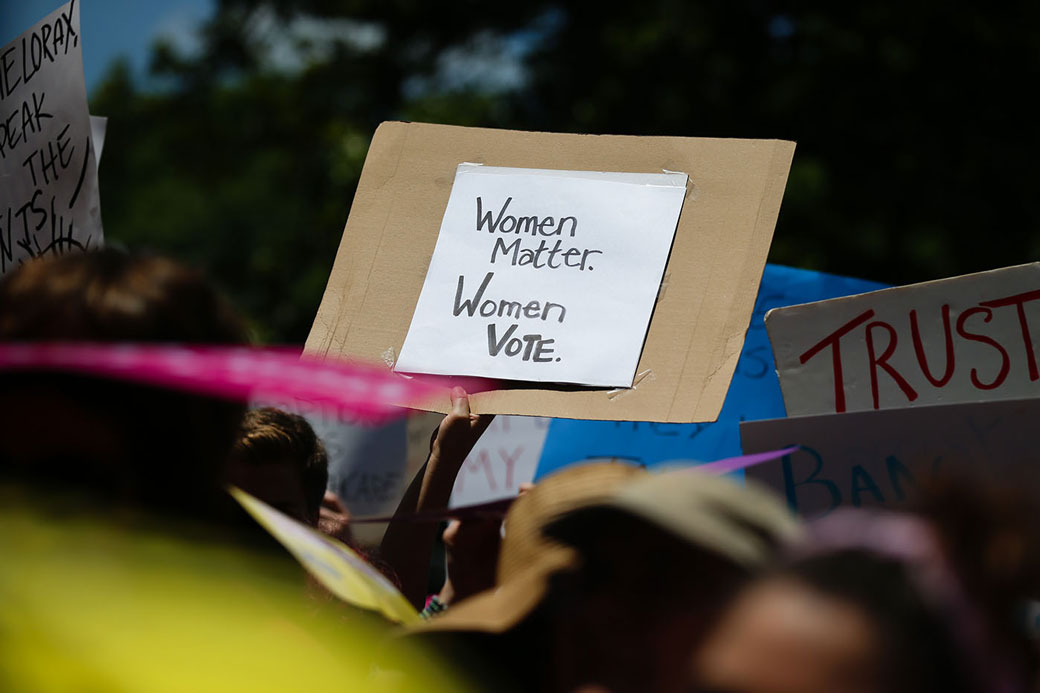Preventing violence against women and girls must remain a priority – The Independent

Report on the ‘Brick by Brick’ Campaign and its Alignment with Sustainable Development Goals
Executive Summary
This report analyses the ‘Brick by Brick’ campaign, a multi-stakeholder initiative aimed at providing safe housing for survivors of domestic abuse. The campaign’s success in funding and constructing two safe houses directly contributes to several key Sustainable Development Goals (SDGs), most notably SDG 5 (Gender Equality), SDG 11 (Sustainable Cities and Communities), and SDG 16 (Peace, Justice and Strong Institutions). The initiative highlights the power of partnerships (SDG 17) while also bringing into focus the challenges in governmental policy and institutional effectiveness in tackling Violence Against Women and Girls (VAWG).
Campaign Overview and Achievements
Multi-Stakeholder Collaboration (SDG 17)
The ‘Brick by Brick’ campaign serves as a model for SDG 17: Partnerships for the Goals, by successfully uniting various sectors of society. Key partners included:
- Media: The Independent
- Non-Profit Sector: Refuge, The Julia Rausing Trust
- Private Sector: Persimmon Homes, Nationwide
- Civil Society: Public donors who raised over £585,000
- Public Figures: Support from politicians, royalty, and celebrities
Tangible Outcomes and Impact
The campaign exceeded its initial fundraising target of £300,000, ultimately securing over £585,000. This funding has resulted in the construction and delivery of two safe houses for families escaping domestic abuse, with the first home already occupied and the second ready for a family to move in. These outcomes represent a direct and life-saving intervention.
Contribution to Sustainable Development Goals (SDGs)
SDG 5: Gender Equality
The campaign’s core mission is directly aligned with Target 5.2: “Eliminate all forms of violence against all women and girls in the public and private spheres.”
- By providing secure accommodation, the initiative offers a critical lifeline for women and children, removing them from violent environments.
- The campaign contributes to the broader goal of halving VAWG, a commitment made by the UK government.
- The provision of refuge is a fundamental step in empowering survivors and potentially saving lives.
SDG 11: Sustainable Cities and Communities
The project addresses Target 11.1: “By 2030, ensure access for all to adequate, safe and affordable housing and basic services.”
- The construction of safe houses provides essential, secure infrastructure for one of society’s most vulnerable groups.
- It underscores the need for safe and inclusive human settlements where all individuals, particularly women and children, are protected from violence.
SDG 16: Peace, Justice and Strong Institutions
While the campaign provides a direct service, it also highlights systemic challenges related to Target 16.1 (Significantly reduce all forms of violence) and Target 16.6 (Develop effective, accountable and transparent institutions).
- The initiative fills a critical gap in service provision that stems from institutional shortcomings.
- Concerns are raised about the government’s ability to deliver on its pledge to halve VAWG, pointing to a need for stronger, more accountable institutional action.
Analysis of Government Policy and Institutional Frameworks
Challenges in Policy Implementation
Despite a stated government commitment to halve VAWG, several challenges impede progress towards achieving related SDG targets. These include:
- A perceived lack of tangible progress and urgency from the current administration.
- Significant funding constraints within the Home Office and the omission of VAWG from the Chancellor’s recent spending review statement.
- A warning from the Home Affairs Select Committee that the government may not meet its target without determined and coordinated action.
Institutional Weaknesses (SDG 16)
The effectiveness of institutional frameworks for tackling domestic abuse is under scrutiny. Key weaknesses identified include:
- Fragmented Funding: Funding streams are reported to be poorly aligned with evidence of effective interventions.
- Silo-driven Mentality: A lack of a holistic, cross-government approach persists, with domestic abuse not being treated as a priority across all relevant departments (e.g., Health, Education).
- Low Institutional Trust: The Home Affairs Select Committee noted low trust in the Home Office’s capacity and imagination to lead the effort effectively.
Recommendations for Advancing National SDG Targets
To ensure the UK government meets its targets on VAWG and contributes effectively to the SDGs, the forthcoming national strategy must incorporate the following:
- Adopt a Holistic Approach: The strategy must mandate a cross-government effort, ensuring departments for health, education, and technology actively participate in a coordinated plan to prevent and respond to domestic abuse.
- Secure Direct Investment: Prioritise and guarantee funding for life-saving infrastructure, such as safe accommodation, in direct alignment with SDG 5 and SDG 11.
- Ensure Sustainable Service Funding: Allocate sufficient and transparent funding for the day-to-day support services required to deliver on the government’s promise, addressing the fragmentation issues highlighted by parliamentary committees.
- Strengthen Institutional Capacity: Implement measures to overcome the siloed mentality in Whitehall and build institutional capacity and coordination, thereby strengthening the framework required to achieve SDG 16.
1. Which SDGs are addressed or connected to the issues highlighted in the article?
SDG 5: Gender Equality
- The article’s central theme is tackling “violence against women and girls (VAWG)” and domestic abuse. The “Brick by Brick” campaign specifically supports women escaping domestic violence, directly aligning with the goal of achieving gender equality and empowering all women and girls.
SDG 11: Sustainable Cities and Communities
- The campaign’s primary action is to build “safe houses” for families escaping domestic abuse. This directly addresses the need for safe and adequate housing, a key component of creating inclusive and safe human settlements. The article states, “The first home is occupied, and the second… is now ready for another family to move in.”
SDG 17: Partnerships for the Goals
- The article highlights a multi-stakeholder partnership to achieve its goals. It describes the campaign as being “run jointly with Refuge, the domestic abuse charity,” and notes it “won the support of politicians, royalty and celebrities,” as well as corporate backers like “The Julia Rausing Trust and Nationwide.” This collaboration between media (The Independent), civil society (Refuge), the public sector (politicians), and private entities exemplifies a partnership for sustainable development.
SDG 3: Good Health and Well-being
- The article connects domestic abuse to severe health outcomes, including death. It mentions that the campaign’s efforts will “potentially save lives” and references a related article about the “Number of suicides due to domestic abuse.” This links the issue directly to ensuring healthy lives and promoting well-being.
2. What specific targets under those SDGs can be identified based on the article’s content?
Target 5.2: Eliminate all forms of violence against all women and girls
- This target is explicitly addressed through the focus on “violence against women and girls (VAWG)” and the government’s commitment “to halve violence against women and girls.” The entire campaign is aimed at mitigating the effects of and providing refuge from this violence.
Target 11.1: Ensure access for all to adequate, safe and affordable housing
- The campaign’s goal of building “a second safe house” directly contributes to this target by providing safe accommodation for a particularly vulnerable group—survivors of domestic abuse. The article emphasizes the need for “direct investment in lifesaving schemes such as accommodation.”
Target 17.17: Encourage and promote effective public, public-private and civil society partnerships
- The “Brick by Brick” campaign serves as a model for this target. It is a partnership involving a newspaper (The Independent), a charity (Refuge), politicians (Sir Keir Starmer), and financial backers (“The Julia Rausing Trust and Nationwide”), demonstrating a “cross-society” effort.
Target 3.4: Promote mental health and well-being
- The article implies this target by highlighting the life-threatening nature of domestic abuse. The reference to suicides linked to domestic abuse underscores the severe impact on mental health and the need for interventions that “potentially save lives.”
3. Are there any indicators mentioned or implied in the article that can be used to measure progress towards the identified targets?
Indicator for Target 5.2
- The article provides a clear, quantitative indicator used by the government: the commitment “to halve violence against women and girls (VAWG) in a decade.” It also provides a baseline statistic: “VAWG accounting for 20 per cent of recorded crime in 2022-23.”
Indicator for Target 11.1
- A direct indicator is the number of housing units created. The article states the campaign’s success in funding a “second safe house” for families. The amount of money raised, “more than £585,000,” serves as a proxy indicator for the capacity to provide this housing.
Indicator for Target 17.17
- The financial success of the partnership is a key indicator. The article mentions the initial target of “£300,000 was hit after only a month,” and the total amount raised was “more than £585,000,” quantifying the effectiveness of the collaboration.
Indicator for Target 3.4
- The article implies a tragic but direct indicator: the “Number of suicides due to domestic abuse.” Reducing this number would be a measure of progress in protecting the health and well-being of survivors.
4. Table of SDGs, Targets, and Indicators
| SDGs | Targets | Indicators |
|---|---|---|
| SDG 5: Gender Equality | 5.2: Eliminate all forms of violence against all women and girls. | Percentage reduction in violence against women and girls (VAWG), with a stated goal to “halve” it. Proportion of recorded crime attributed to VAWG (“20 per cent of recorded crime in 2022-23”). |
| SDG 11: Sustainable Cities and Communities | 11.1: Ensure access for all to adequate, safe and affordable housing. | Number of safe houses built for survivors of domestic abuse (“a second safe house”). |
| SDG 17: Partnerships for the Goals | 17.17: Encourage and promote effective public, public-private and civil society partnerships. | Amount of funds raised through the multi-stakeholder partnership (“more than £585,000 was raised”). |
| SDG 3: Good Health and Well-being | 3.4: Promote mental health and well-being. | “Number of suicides due to domestic abuse.” |
Source: independent.co.uk

What is Your Reaction?
 Like
0
Like
0
 Dislike
0
Dislike
0
 Love
0
Love
0
 Funny
0
Funny
0
 Angry
0
Angry
0
 Sad
0
Sad
0
 Wow
0
Wow
0










































































